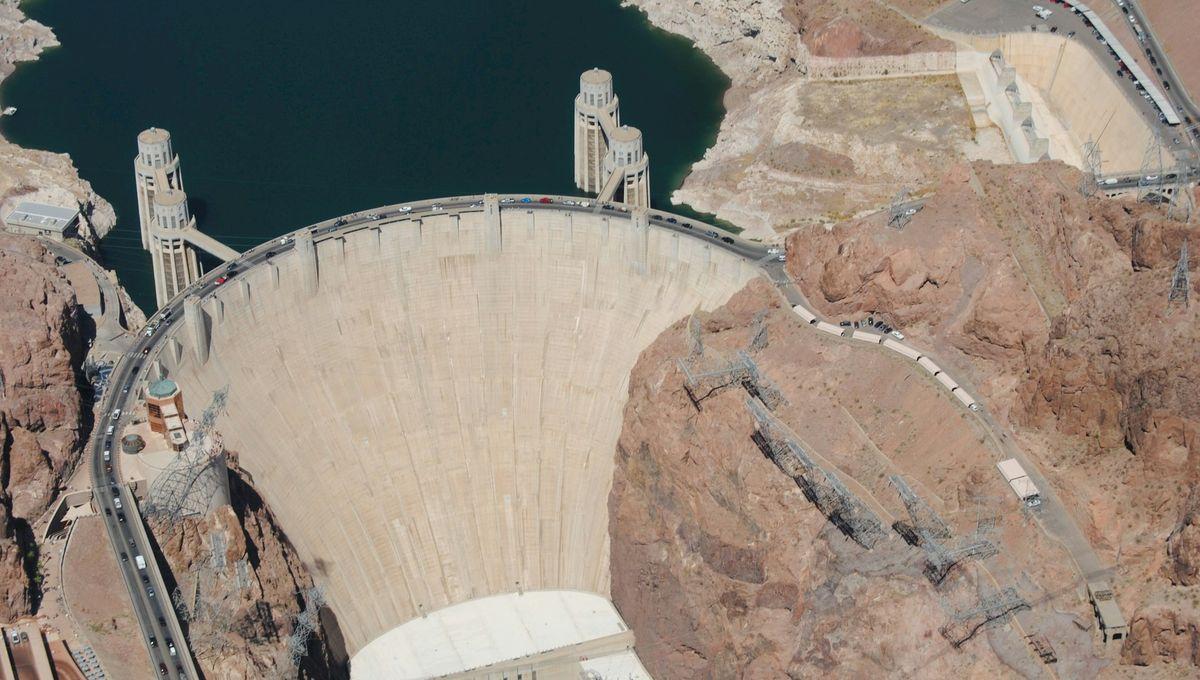-
Новости
- ИССЛЕДОВАТЬ
-
Страницы
-
Статьи пользователей
-
Форумы
Dams Have Nudged Earth's Poles By Over 1 Meter In The Past 200 Years

Humans Built So Many Dams In The Past Two Centuries They Have Shifted Earth's Poles
Over the past two centuries, humans have quietly nudged the very axis of our planet. As thousands of dams have been built across the world, Earth's poles have tilted by over 1 meter (3 feet). The movement of Earth's poles can be traced to two great waves of dam construction: first in North America and Europe during the 19th and early 20th centuries, and then across Asia and East Africa in the latter half of the 20th century.
It’s all to do with mass distribution and the planet’s moment of inertia. Earth will happily spin like a basketball twirling on a fingertip, but if mass is suddenly added to one region, the rotation starts to wobble. Imagine slapping a lump of clay onto one side of that spinning basketball. To conserve momentum, the mass-laden side shifts slightly outward, nudging the ball's rotation. It’s the same principle that explains how an ice skater can spin faster by pulling in their arms; changing the distribution of mass alters the rotational dynamics. In Earth's case, the shift in mass comes in the form of water trapped behind colossal dams. These human-made lakes redistribute the planet’s mass, shifting the position of the poles ever so slightly. In the new study, planetary scientists at Harvard University explored this fascinating effect by looking at a global database of 6,862 dams built around the world between 1835 to 2011. From this, they were able to calculate how much water had been stored in reservoirs, how that water reshaped Earth’s mass distribution, and whether it was enough to shift the planet’s poles. An aerial view of the Hoover Dam and Mike O'Callaghan-Pat Tillman Memorial Bridge. Overall, they found dam construction had shifted the poles about 113 centimeters (3.7 feet) in total and caused a 21-millimeter (0.83-inch) drop in global sea levels between 1835 and 2011. Up to 104 centimeters (3.4 feet) of movement occurred in the 20th century, but the movement wasn’t solely in a single direction. From 1835 to 1954, a surge of dam building in North America and Europe nudged the poles toward the equator. During this period, the North Pole drifted roughly 20.5 centimeters (8 inches), toward the 103rd meridian east, a line that cuts through Russia, Mongolia, China, and the Indochina Peninsula. After 1954, the focus of dam construction shifted to East Africa and Asia. As a result, the pole began drifting in another direction, about 57 centimeters (22 inches) toward the 117th meridian west, which runs through western North America and stretches out over the South Pacific. “As we trap water behind dams, not only does it remove water from the oceans, thus leading to a global sea level fall, it also distributes mass in a different way around the world,” Natasha Valencic, lead study author and a graduate student in Earth and planetary sciences at Harvard University, said in a statement. “We’re not going to drop into a new ice age, because the pole moved by about a meter in total, but it does have implications for sea level.” All of this is a cumulative effect of thousands of dams being built over decades. However, in some exceptional instances, single dams can have their own influence. China’s Three Gorges Dam, the largest hydroelectric dam in the world, is so colossal that it might have had a measurable impact on Earth’s spin. Geophysicists at NASA have previously said that the Chinese megadam is able to hold 40 cubic kilometers (10 trillion gallons) of water, enough to move the pole position of Earth by about 2 centimeters (0.8 inches). The study is published in the journal Geophysical Research Letters.


